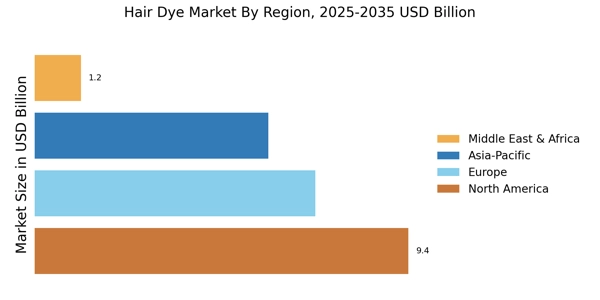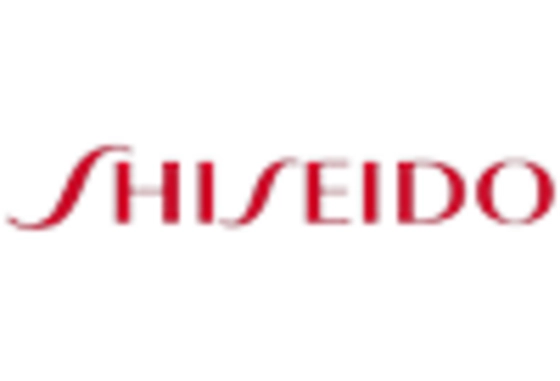Growing Awareness of Hair Health and Care
The Hair Dye Market is experiencing a growing awareness of hair health and care among consumers, leading to a shift in purchasing behavior. Individuals are increasingly seeking hair dyes that not only provide color but also nourish and protect hair. This trend is reflected in the rising popularity of products infused with vitamins, oils, and other beneficial ingredients. In 2025, it is expected that the market for hair dyes that prioritize hair health will expand significantly, as consumers become more discerning about the products they use. Brands that emphasize the dual benefits of coloring and hair care are likely to attract a loyal customer base. Furthermore, educational campaigns highlighting the importance of hair health contribute to this trend, as consumers become more informed about the potential damage caused by traditional dyes. This heightened awareness ultimately drives demand for innovative products that align with health-conscious consumer preferences.
Increasing Demand for Hair Color Products
The Hair Dye Market experiences a notable surge in demand for hair color products, driven by changing consumer preferences and a growing inclination towards self-expression. As individuals seek to enhance their appearance, the market witnesses a shift towards vibrant and unconventional colors. In 2025, the market is projected to reach a valuation of approximately 25 billion dollars, reflecting a compound annual growth rate of around 5%. This trend is particularly evident among younger demographics, who are more inclined to experiment with bold shades. Furthermore, the rise of social media platforms amplifies this trend, as users showcase their unique hair colors, thereby influencing others to follow suit. Consequently, brands are compelled to innovate and diversify their product offerings to cater to this evolving consumer landscape.
Rise of Eco-Friendly and Sustainable Products
The Hair Dye Market is witnessing a pronounced shift towards eco-friendly and sustainable products, as consumers become increasingly aware of environmental issues. This trend is characterized by a growing demand for natural and organic hair dyes that minimize the use of harmful chemicals. In 2025, it is projected that the market for eco-friendly hair dyes will constitute a substantial segment, reflecting a broader societal movement towards sustainability. Brands that prioritize environmentally responsible practices, such as recyclable packaging and cruelty-free testing, are likely to gain a competitive edge. Furthermore, the rise of conscious consumerism encourages companies to adopt transparent sourcing and production methods, appealing to environmentally aware consumers. This shift not only aligns with consumer values but also positions brands favorably in a market that is progressively leaning towards sustainability.
Technological Advancements in Hair Dye Formulations
Technological advancements play a pivotal role in shaping the Hair Dye Market, as manufacturers increasingly invest in research and development to create innovative formulations. These advancements include the development of ammonia-free dyes, which are gentler on hair and reduce damage. Additionally, the introduction of long-lasting and fade-resistant colors enhances consumer satisfaction, leading to repeat purchases. In 2025, it is estimated that the market for such advanced formulations will account for a significant portion of overall sales, reflecting a growing consumer preference for high-quality products. Moreover, the integration of digital tools for color matching and virtual try-ons further enhances the consumer experience, allowing individuals to visualize their desired hair color before making a purchase. This technological evolution not only attracts new customers but also retains existing ones, thereby driving market growth.
Influence of Celebrity Endorsements and Social Media
The Hair Dye Market is significantly influenced by celebrity endorsements and social media trends, which play a crucial role in shaping consumer preferences. Celebrities often serve as trendsetters, showcasing various hair colors and styles that resonate with their followers. In 2025, it is anticipated that marketing strategies leveraging influencer partnerships will dominate the industry, as brands seek to capitalize on the reach and impact of social media platforms. This dynamic creates a ripple effect, where consumers are inspired to replicate the looks of their favorite personalities. Additionally, user-generated content on platforms like Instagram and TikTok further amplifies this trend, as individuals share their hair transformations, thereby encouraging others to experiment with color. Consequently, brands are increasingly investing in social media marketing to engage with consumers and promote their products effectively.


















Leave a Comment